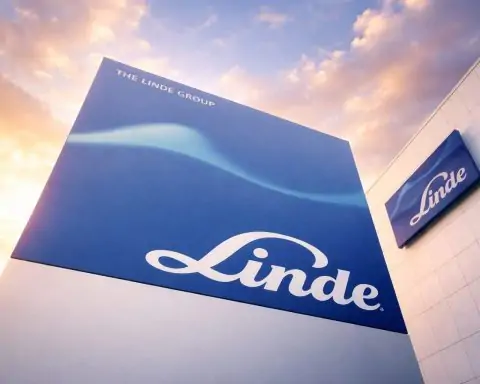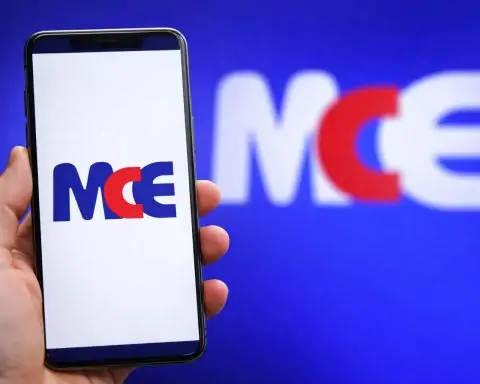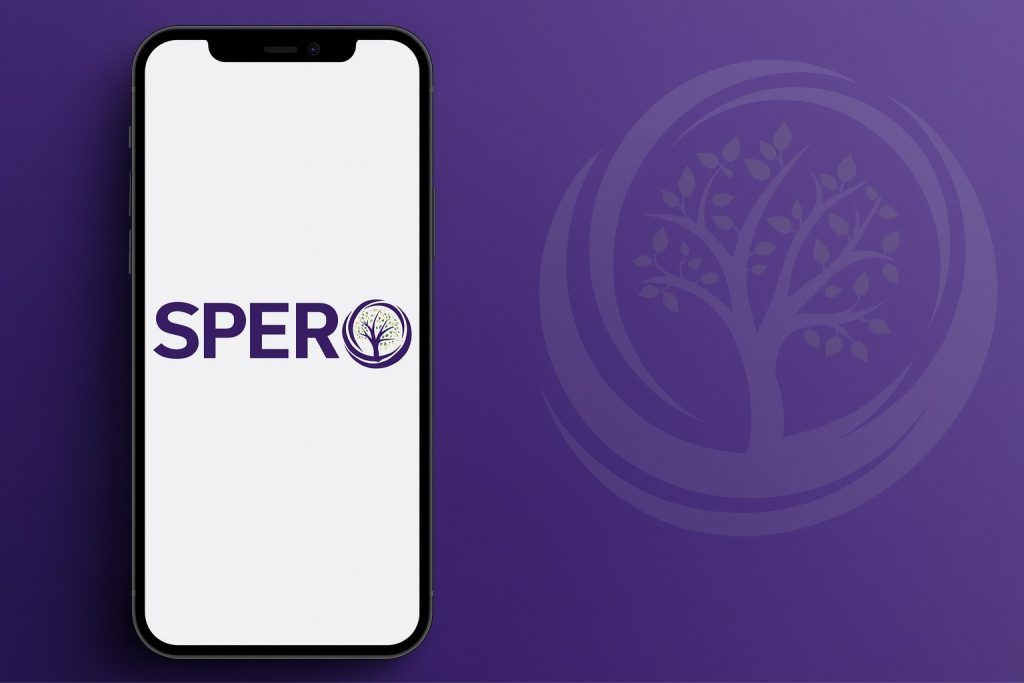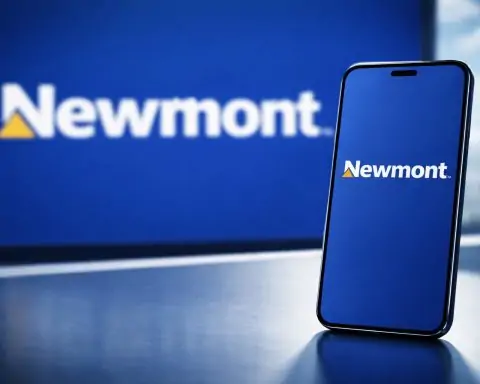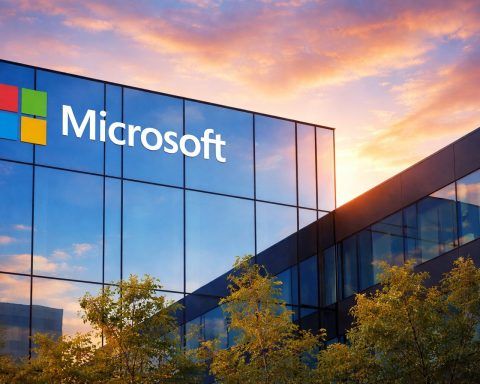- DocGo’s stock closed around $1.20 on Oct. 20, 2025 [1] and surged about 34–36% in after-hours trading after announcing it would acquire telehealth platform SteadyMD [2].
- The SteadyMD deal pairs DocGo’s mobile healthcare services with a 50-state virtual clinician network (expected to serve 3M+ patients in 2025) and will be funded from DocGo’s cash on hand [3] [4].
- DocGo reported Q2 2025 revenue of $80.4M (down ~51% YoY) and a net loss of $13.3M [5], reflecting the wind-down of prior migrant health programs. The company reiterated full-year revenue guidance ($300–$330M) and plans to reach positive Adjusted EBITDA by H2 2026 [6].
- DocGo ended Q2 with a strong cash position (~$128.7M) [7], giving it flexibility for investments or acquisitions. The CEO and founders of SteadyMD will join DocGo’s leadership team after the deal closes [8].
- Recently DocGo also launched a new care program in New Mexico covering 10,000 patients in partnership with a national insurer [9], expanding its mobile health services footprint.
- A securities fraud lawsuit (filed in 2023) alleging false statements about the former CEO’s background and business claims is proceeding in court [10] – a reminder of past management controversies.
- Analysts remain cautious: the average 12-month price target is ~$3.08 (range $1.60–$4.00) [11], roughly double current levels. Can DocGo’s new deals and cost cuts deliver on that promise?
Stock Surges on SteadyMD Acquisition
DocGo’s shares jumped more than 34% in after-hours trading on Oct. 20, 2025, after the company announced it would acquire SteadyMD, a virtual care platform. According to an Investing.com report, DocGo stock “surged 34.6% in after-hours trading Monday following the company’s announcement that it has acquired virtual care platform SteadyMD” [12]. The acquisition was disclosed on Monday, Oct. 20, and a conference call to discuss it was scheduled for Oct. 21.
SteadyMD brings a nationwide telehealth network (600+ clinicians serving ~3 million patients in 2025) to DocGo’s existing mobile health and ambulance services [13] [14]. In a statement, CEO Lee Bienstock hailed the deal as “an exciting milestone in DocGo’s mission to make high-quality, technology-powered healthcare more accessible” and noted that combining SteadyMD’s virtual platform with DocGo’s field services will help “provide patients with healthcare at any address” [15] [16]. SteadyMD co-founder Guy Friedman added that joining forces would give the team “resources to extend our vision of providing a more personalized, patient-centered approach to virtual care at an even larger scale” [17].
Importantly, DocGo will pay for SteadyMD with existing cash (the company has no debt and ~$128.7M in cash as of June 30) [18], and plans to update full-year revenue and EBITDA guidance on its next earnings call. According to regulatory filings, SteadyMD is expected to generate roughly $25M in revenue in 2025 and become EBITDA-positive in 2026 [19] [20]. The market reaction – a one-day pop of over a third – suggests investors were encouraged that this move could bolster DocGo’s growth beyond its legacy programs.
New Contracts and Service Expansions
Beyond the SteadyMD deal, DocGo has been steadily winning new contracts to expand its services. In mid-October it announced a major new program in New Mexico, launching “care gap closure” services for about 10,000 members of a national insurer’s plan [21]. This initiative brings DocGo’s mobile clinicians into patients’ homes for routine care (vaccinations, chronic disease checkups, etc.) to close gaps in preventive care and primary care access. CEO Bienstock said this program “leverag[es] our proven technology and dedicated mobile clinicians to help remove barriers to care” and is “another step towards our vision of making healthcare available at any address” [22].
Earlier in 2025 DocGo secured other deals as well, such as providing a digital transport-management platform and ambulance services for a large New York hospital system (beginning July 1) [23], and a multi-year contract to provide BLS/ALS ambulance services to the Albany Stratton VA Medical Center [24]. These contracts reflect DocGo’s three business segments: Mobile Health Services (community and home care), Transportation Services (ambulance and transport management), and Corporate (administrative support and other services).
Taken together, these partnerships and contracts underscore DocGo’s pivot from temporary pandemic-era migrant programs (which are mostly wound down) toward longer-term payer and provider business. Analysts note that DocGo has now assigned over 1.2 million patients to its care gap programs (through partnerships with insurers and health plans) – a growing pipeline that should support its mobile healthcare revenue going forward.
Q2 2025 Results & Financial Outlook
DocGo reported Q2 2025 results on Aug. 6, 2025 (after market). Total revenue came in at $80.4 million, down 51% year-over-year from $164.9M in Q2 2024 [25]. This sharp decline was expected, as DocGo had significantly wound down its government-funded migrant healthcare programs during 2024. Mobile Health Services revenue fell from $116.7M to $30.8M YoY (mostly due to ending migrant projects) [26], while Medical Transportation Services revenue was slightly higher at $49.6M vs $48.2M a year ago [27]. In Q2 2025, transportation accounted for about 62% of revenue, with mobile health the remaining 38%.
The company posted a GAAP net loss of $13.3M in Q2 (roughly $0.11 per share) and an Adjusted EBITDA loss of $6.1M, versus an adjusted loss of $17.2M in Q2 2024 [28]. DocGo continues to operate at a loss, but management highlighted strong cash generation: DocGo generated $33.6M of operating cash flow in Q2 as it collected on outstanding invoices [29]. By quarter end, total cash and investments were $128.7M – up from $103.1M at March 31 – thanks to these collections, despite spending on a stock buyback program and the acquisition of PTI Health earlier in 2025 [30].
On the Q2 earnings call, CFO Norm Rosenberg emphasized that the revenue drop was “entirely due to the government vertical, primarily in migrant related projects” winding down [31]. Importantly, management reaffirmed 2025 guidance: DocGo still expects $300–$330M in revenue and a loss of $20–$30M in Adjusted EBITDA for the full year, roughly in line with prior forecasts. They also reiterated the target to reach positive adjusted EBITDA in H2 2026 [32]. In practice, that means running “quarterly revenues in the $80–85M range” with higher gross margins and lower SG&A, Rosenberg said [33].
To bridge the loss, DocGo is cutting costs: it is reducing headcount across corporate areas and negotiating vendor rates, so that recurring SG&A spend fell by 9% YoY in Q2 [34]. The company expects these efforts to continue, and is targeting about $10M in annual cost savings. Rosenberg noted that even with the pressure on revenue, DocGo remains well-capitalized (“our robust pipeline, strong balance sheet… will enable us to execute this plan” [35]).
Overall, the financial update is mixed: revenue is down sharply, but cash is up and guidance is intact. Investors will be watching Q3 results (to be announced in Nov/Dec) to see if the revenue trajectory stabilizes with new contracts, and how the SteadyMD deal contributes to growth projections.
Analyst Commentary & Stock Forecasts
Given DocGo’s small market cap and uneven results, Wall Street opinion is mixed. As of Oct. 2025, DCGO trades near $1.20–$1.60, and analysts’ 12-month targets average about $3.08 [36]. TradingView notes analysts’ high target is $4.00 and low is $1.60 [37]. Most recent analyst action has been cautious: e.g. Canaccord Genuity downgraded DocGo in May 2025 and in August kept a “Hold” rating with a price target around $1.60 [38] [39]. A Benzinga summary notes the latest Canaccord price target is about $1.60 (suggesting little upside) [40].
Zacks Investment Research likewise expects short-term pressure. In a note on the Q2 results, Zacks pointed out DocGo’s Q2 EPS of -$0.11 missed consensus, even though revenue modestly beat estimates, and assigned the stock a “Rank #4 (Sell)” rating [41]. Zacks analysts feel near-term earnings uncertainties outweigh the positive cash flow – at least until revenue growth can resume.
On the other hand, some valuation metrics look attractive: an InvestingPro analysis cited in Investing.com noted DocGo’s stock was trading at only ~11.8× forward earnings and 0.74× book value [42] after the Q1 results. That commentary called the shares “undervalued at current levels” given their fundamentals. If DocGo successfully integrates SteadyMD and expands its addressable market, bullish analysts argue the stock could re-rate upward.
For now, experts emphasize the key drivers to watch: progress on cost cuts, ramp-up of new contracts (like the NM care gap program), and the impact of the SteadyMD acquisition on 2026 guidance. As one market commentator notes, “the sustainability of the stock’s price movement… will mostly depend on management’s commentary on the earnings call” [43]. DocGo’s leadership will get that chance in early November (earnings call), where they plan to update how the SteadyMD revenue is incorporated. Short-term traders may ride the momentum, but many investors will be waiting for actual results and clearer guidance before committing.
Legal Issues and Risks
Investors should be aware of DocGo’s ongoing legal challenges. In late 2023, a securities fraud class-action was filed alleging the company made false claims about its CEO’s background (specifically, his academic credentials) and about contracts with UnitedHealthcare and Medicaid programs in NY [44]. In mid-2025 a federal judge allowed key claims to proceed, and plaintiffs point out insiders sold over $4 million of stock before the issues came to light, contributing to a 25% stock drop in Sept 2023 [45]. While DocGo has stood by its disclosure, the litigation remains unresolved.
Such lawsuits pose a risk: they can result in legal fees, potential settlements, and ongoing uncertainty that weighs on investor sentiment. However, DocGo has so far largely focused on operations and has ample cash to defend itself. Still, any worsening of this case or new enforcement actions could dampen the stock.
In addition, DocGo operates in a heavily regulated sector. Its ambulance services and Medicaid contracts expose it to compliance and reimbursement risks. Changes in healthcare policies or funding (e.g. Medicaid rules on reimbursement for mobile care) could affect future revenue. On the positive side, DocGo’s diversification – from mobile clinics to ambulance fleets – helps mitigate the impact of any single program winding down (as seen with the migrant contracts). Investors should weigh these regulatory and litigation risks alongside the growth opportunities.
Outlook
DocGo’s short-term outlook hinges on execution. The stock’s recent jump indicates investors are betting the SteadyMD acquisition and new care partnerships can spark growth. If DocGo can integrate SteadyMD successfully, it will have a rare end-to-end platform (ambulance + mobile clinic + telehealth). That could open cross-selling to insurers and health systems seeking “healthcare at home” solutions. Analysts will be watching whether DocGo raises its 2025 guidance or provides promising 2026 targets when it reports Q3 results in early November.
Longer-term, DocGo aims to be profitable by late 2026 [46]. Achieving this will require sustaining new business, improving margins, and controlling costs. The company’s $128.7M cash cushion [47] – roughly 20% of its market cap – is a major strength that can fund expansion or absorb setbacks.
Overall, DocGo is at a crossroads: its proven mobile healthcare model is gaining some traction with payers, but the legacy revenue declines and past controversies weigh it down. The next few quarters will reveal if the recent optimism is justified. For now, DCGO remains a speculative small-cap: with shares trading well below prior highs, analysts’ price targets suggest potential upside (>$3 on average [48]) but also acknowledge significant downside risk (targets as low as $1.60 [49]). Investors should monitor quarterly results and management’s execution closely.
Sources: Company filings and press releases [50] [51] [52]; market news and analysis from Investing.com, Zacks, etc. [53] [54] [55]. The data and quotes cited reflect information available as of October 21, 2025.
References
1. finance.yahoo.com, 2. m.uk.investing.com, 3. www.citybiz.co, 4. m.uk.investing.com, 5. www.marketbeat.com, 6. www.marketbeat.com, 7. www.marketbeat.com, 8. www.citybiz.co, 9. www.stocktitan.net, 10. www.stocktitan.net, 11. www.tradingview.com, 12. m.uk.investing.com, 13. www.citybiz.co, 14. m.uk.investing.com, 15. www.citybiz.co, 16. m.uk.investing.com, 17. m.uk.investing.com, 18. www.marketbeat.com, 19. www.citybiz.co, 20. m.uk.investing.com, 21. www.stocktitan.net, 22. www.stocktitan.net, 23. www.marketbeat.com, 24. www.stocktitan.net, 25. www.marketbeat.com, 26. www.marketbeat.com, 27. www.marketbeat.com, 28. www.marketbeat.com, 29. www.marketbeat.com, 30. www.marketbeat.com, 31. www.marketbeat.com, 32. www.marketbeat.com, 33. www.marketbeat.com, 34. www.marketbeat.com, 35. www.marketbeat.com, 36. www.tradingview.com, 37. www.tradingview.com, 38. finviz.com, 39. www.benzinga.com, 40. www.benzinga.com, 41. finviz.com, 42. www.investing.com, 43. finviz.com, 44. www.stocktitan.net, 45. www.stocktitan.net, 46. www.marketbeat.com, 47. www.marketbeat.com, 48. www.tradingview.com, 49. www.tradingview.com, 50. www.citybiz.co, 51. www.marketbeat.com, 52. www.stocktitan.net, 53. m.uk.investing.com, 54. finviz.com, 55. www.investing.com


